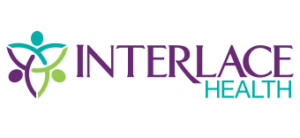Resolving Compliance Concerns in Healthcare Organizations
Electronic informed consent can reduce many of the risks of using paper documents. Learn more about the benefits of integrating electronic health records.
Compliance in the healthcare industry is critical, and it’s a major part of running a successful organization. Failing a Joint Commission audit or getting a low score from CMS can have serious repercussions. It makes sense, then, that healthcare organizations would want to minimize their chances of running into compliance issues.
That starts with being aware of some of the most significant compliance risk areas in healthcare, including concerns like informed consent. It’s a mandatory process requiring healthcare organizations to have forms signed by both patients and doctors to confirm that all patients have been informed of the details of procedures — including any risks, potential benefits, and alternative forms of care available.
Any violation of informed consent is serious, but more than 500 organizations have failed their audits due to missing consent forms. It’s a startling number, though it’s not necessarily due to negligence or poor standards of care. Instead, the underlying cause of many of these cases ties back to something simple: paper.
Why Paper Is a Problem
Medical documents have been recorded and stored on paper for decades, so why do paper-related compliance issues occur? There have always been risks associated with paper documents, but paper was the only way to collect information and keep records for so long that many healthcare organizations have assumed those risks, done their best, and continued on with their work.
Over the years, technology has changed this. It has made it possible for healthcare organizations to see the vulnerabilities and inefficiencies associated with paper processes, easing the transition to more modern — and compliant — ways of doing things.
Think, for a moment, about a paper informed consent document. When organizations rely on paper processes, they struggle with the reality that paper forms are so easy to lose. Maybe a form gets stuffed in a pocket and forgotten about. Maybe it gets put in the wrong file or left behind in an emergency. Maybe someone spills coffee on it and then tosses it into a trash can. Regardless of what caused the loss of those documents, it’s often too late to do anything by the time someone realizes they’re gone.
Beyond the problem of misplacing paper documents, there’s also the issue of human error. Because every paper form has to be filled out and signed by various people, there’s plenty of room for mistakes. All it takes is one misspelled name or blank field to cause a violation of informed consent. Luckily, technology has made it possible to reduce the risk of using paper documents. Instead, healthcare organizations can handle all of these duties electronically.
Going Digital Can Help Ease Compliance Concerns
Electronic informed consent makes compliance simpler and stronger. When you don’t have to worry about a physical copy of paper, it’s much harder for forms to go missing. There’s also a reduced risk of error because electronic consent software is set up to populate a form’s fields with relevant demographic information. While going digital doesn’t guarantee compliance, it does greatly reduce many of the common compliance issues associated with paper.
The benefits of integrating electronic health records with our electronic consent solution are significant. In fact, more than 1,100 healthcare organizations have already experienced those benefits firsthand. Reach out today to talk with us more about electronic informed consent and how it could transform your healthcare organization.
ABOUT THE AUTHOR:

Tommy Hunkins is a marketing professional who enjoys all things digital and automated. He spends his free time with his two chocolate labs, Booker and Hutch.





